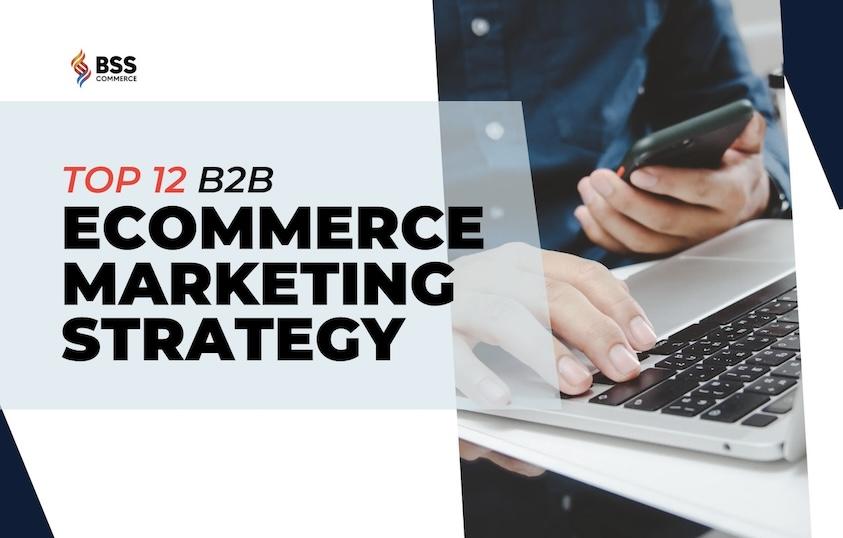In today’s fast-paced digital landscape, the way businesses engage with each other is undergoing a seismic shift. As we look ahead to 2025,the importance of a robust B2B eCommerce strategy has never been clearer. Whether you’re a seasoned veteran in the industry or just starting to explore the vast potential of online business-to-business transactions, understanding the key tactics that will define the next wave of eCommerce is crucial. From harnessing the power of data analytics to optimizing customer experiences, the strategies we adopt today will set the stage for our success tomorrow. Join us as we dive into the must-know tactics that can elevate your B2B eCommerce game and ensure you stay ahead of the competition in an increasingly digital marketplace. Ready to transform your business? Let’s get started!
Understanding the Evolving Landscape of B2B Ecommerce
The B2B ecommerce landscape is changing rapidly, driven by advancements in technology, shifting buyer behaviors, and the need for businesses to remain competitive. As we look toward 2025, understanding these changes is crucial for crafting effective strategies that resonate with modern buyers.
Personalization is no longer just a buzzword; it has become a basic expectation. Businesses must embrace data analytics to create tailored experiences for their customers. By leveraging insights from customer interactions, companies can anticipate needs and deliver personalized content, product recommendations, and pricing strategies. This level of customization not only enhances customer satisfaction but also fosters long-term loyalty.
Another key aspect in the evolving landscape is the rise of omnichannel strategies.B2B buyers are increasingly engaging with brands across multiple platforms,from mobile apps to social media and traditional websites. To meet these expectations, businesses should ensure a seamless experience across all channels. This involves integrating systems, maintaining consistent branding, and providing thorough support that empowers customers to interact with brands on their terms.
A meaningful trend shaping B2B ecommerce is the utilization of AI and automation. These technologies can streamline operations, enhance customer service, and improve decision-making. For instance, chatbots can handle routine inquiries, allowing sales teams to focus on complex negotiations. Additionally, AI-driven analytics can optimize inventory management and forecast demand more accurately, reducing overhead and enhancing profitability.
as the market evolves, so too does the importance of sustainability and ethical practices. B2B buyers are increasingly prioritizing vendors that demonstrate a commitment to environmental responsibility and social governance. Companies can differentiate themselves by adopting sustainable practices and transparently communicating these efforts to their stakeholders.This not only improves brand reputation but also aligns businesses with the values of socially-conscious consumers.
| Key Strategy | Description | Benefit |
|---|---|---|
| Personalization | Using data analytics to tailor content and recommendations | Increased customer satisfaction and loyalty |
| Omnichannel Engagement | Seamless interaction across multiple platforms | Higher conversion rates and customer retention |
| AI and Automation | Streamlining operations and enhancing customer service | Improved efficiency and lower costs |
| Sustainability | Adopting eco-friendly practices and transparency | Enhanced brand reputation and alignment with consumer values |
Staying ahead in the B2B ecommerce sector requires agility and foresight. As new technologies emerge and buyer expectations shift, it’s imperative for businesses to remain adaptable. By focusing on these key strategies, companies can position themselves to thrive in the competitive landscape of 2025 and beyond.
Why Personalization is the Future of B2B Customer Experience
In an era where customers are inundated with choices,personalization has emerged as a game-changer in the B2B landscape. Companies that embrace tailored experiences can connect more deeply with their clients, fostering loyalty and driving revenue growth. As we steer into 2025, it’s clear that the future of customer experience lies in how well businesses can adapt to the unique needs of their clients.
Data-Driven Insights are at the heart of effective personalization. Organizations can leverage analytics tools to gather data about buyer behavior,preferences,and pain points. This data not only enhances product recommendations but also informs marketing strategies that resonate with target audiences. Companies that harness these insights are better positioned to create relevant content that aligns with specific client needs.
segmentation plays a crucial role in personalizing the B2B customer journey. By categorizing clients based on various criteria—such as industry, company size, and buying patterns—organizations can tailor their outreach efforts. This ensures that every piece of dialog feels relevant and purposeful. Here’s how effective segmentation can look:
| Segment | Personalization Strategy |
|---|---|
| Startups | Offer flexible pricing models and easy onboarding. |
| Enterprises | Provide dedicated account management and customized solutions. |
| Nonprofits | Highlight social responsibility initiatives and discounts. |
automated Communication is another vital component of personalization. Advanced technologies such as AI and machine learning empower businesses to deliver timely and relevant messages to clients. Automated emails, chatbots, and personalized landing pages enhance the overall experience, ensuring that clients receive the right information at the right time. Imagine a scenario where a client receives an email recommending a service just as thay’re looking to solve a specific issue. That’s the power of well-timed personalization.
customer feedback should be actively sought and utilized to refine personalization strategies. Engaging clients through surveys and direct outreach not only demonstrates that their opinions matter but also allows businesses to adapt their approaches in real time. this two-way communication will ensure that offerings evolve alongside client needs,creating a dynamic,responsive customer experience.
by intertwining these strategies, companies position themselves as not just vendors, but partners committed to their clients’ success. As the B2B landscape continues to evolve, those who prioritize personalization will undoubtedly lead the charge, turning transactional relationships into meaningful partnerships.
Harnessing Data Analytics to Drive Smart Decisions
In today’s rapidly evolving B2B landscape,leveraging data analytics has become essential for companies looking to refine their decision-making processes. By harnessing the power of data, organizations can gain invaluable insights into market trends, customer behavior, and operational efficiencies. The key is to utilize these insights to inform strategic choices that drive growth and enhance competitiveness.
First and foremost, understanding your audience is critical. Utilizing analytics allows businesses to segment their customer base effectively, enabling targeted marketing efforts that resonate with specific groups. For example:
- Behavioral Analysis: By tracking how customers interact with your website and products, you can tailor offerings that meet their needs.
- Predictive Analytics: Implementing predictive models can definitely help forecast purchasing trends and inform inventory management strategies.
- Customer Journey Mapping: Analyzing the customer journey reveals pain points and opportunities for advancement.
Moreover, data analytics empowers companies to optimize their operations. By evaluating key performance indicators (KPIs) across various departments, businesses can identify inefficiencies and areas for improvement. Here’s how:
| Department | Key Metrics | Potential Improvements |
|---|---|---|
| Sales | conversion Rates | Refine lead qualification processes |
| Marketing | Customer Acquisition Cost | Optimize ad spend through A/B testing |
| Supply Chain | Lead Times | Enhance supplier relationships for faster delivery |
Furthermore, data analytics fosters a culture of innovation. By encouraging teams to leverage data in brainstorming sessions, organizations can push the boundaries of traditional thinking. For instance, by analyzing competitor pricing strategies, companies can identify gaps in the market and develop unique product offerings that stand out.
Lastly, organizations should focus on establishing a data-driven culture. This involves not just implementing analytics tools, but also training staff to interpret and act on data insights effectively. Regular workshops and access to data resources can empower teams to make informed decisions that align with the organization’s overarching goals.
In essence, the future of B2B eCommerce hinges on the ability to translate data into actionable strategies. As we move towards 2025, companies that embrace data analytics will not only make smarter decisions but also pave the way for long-term success in a competitive marketplace.
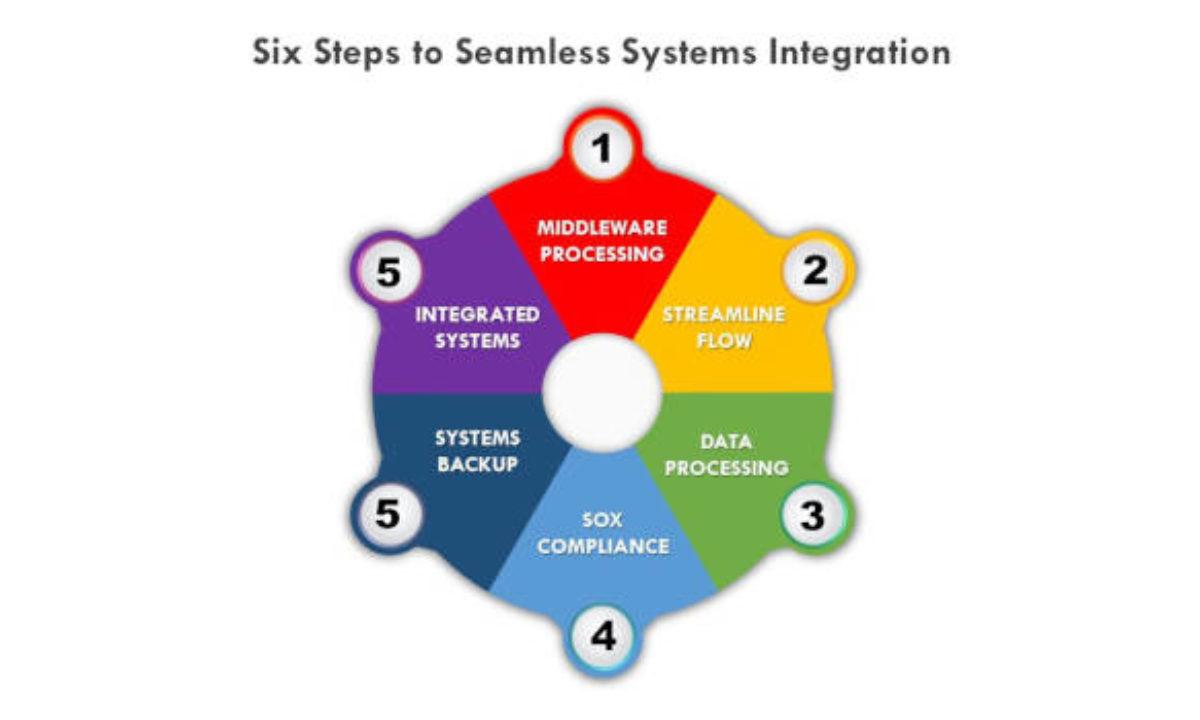
The Importance of Seamless integrations with Existing Systems
In the fast-paced world of B2B eCommerce, having a powerful platform is only part of the equation. The real game-changer lies in how well your system integrates with existing tools and platforms. Today’s businesses are equipped with a multitude of software solutions that streamline operations, from inventory management to customer relationship management (CRM). Seamless integration ensures that these systems communicate effectively, allowing for smoother workflows and better decision-making.
Imagine a scenario where your inventory management system automatically updates your eCommerce platform when stock levels change. This not only saves time but significantly reduces the risk of overselling or stockouts. Here are some key benefits of ensuring seamless integrations:
- Enhanced Efficiency: Automating data transfers between systems minimizes manual entry and reduces human error.
- Improved Data Accuracy: With real-time data synchronization, you can trust that the information you rely on is up-to-date and accurate.
- Streamlined Customer Experience: Integration allows for a smooth journey for your customers,from browsing products to finalizing payments.
- Scalability: As your business grows, an integrated system can easily adapt to new tools without disrupting existing workflows.
Moreover, the complexity of modern business operations necessitates a holistic approach. When different departments use disparate systems, the potential for miscommunication increases. An integrated system fosters collaboration by allowing all departments to access the same information, leading to better strategy formulation and execution.
| Integration Type | Benefits |
|---|---|
| ERP Integration | Streamlines financial and operational data, improving resource management. |
| CRM Integration | Enhances customer insights and support, boosting satisfaction and retention. |
| Payment Gateway Integration | Facilitates secure and efficient transactions, reducing cart abandonment rates. |
Ultimately, embracing seamless integrations is not just about convenience; it’s a strategic move that positions your business for success in the competitive eCommerce landscape of 2025. By proactively addressing integration needs, companies can harness the full potential of their digital ecosystems, ensuring they remain agile, responsive, and capable of meeting customer demands head-on.

Building Trust Through Transparent Communication
In the fast-evolving landscape of B2B ecommerce, establishing a foundation of trust with your clients is paramount. One effective way to cultivate this trust is through transparent communication. Clarity in your messaging not only strengthens relationships but also enhances customer loyalty and satisfaction.
Consider the following strategies to foster transparency:
- open Dialogue: Encourage feedback and inquiries. Create channels where clients feel comfortable voicing their opinions or concerns.
- regular Updates: keep your clients informed about changes, new features, or even challenges your business may face. This proactive approach shows that you value their partnership.
- Clear Pricing Models: Avoid hidden fees or complex pricing structures. Make sure your clients understand exactly what they are paying for,and why.
- Honest Marketing: Ensure that your marketing materials accurately reflect your products or services.Overpromising can lead to disappointment, eroding trust.
One powerful tool for transparent communication is the use of data and analytics. By sharing insights into customer behavior and market trends, you can help your clients make informed decisions. Consider implementing a dashboard that provides real-time data relevant to their purchases.
| Communication Method | Benefits |
|---|---|
| Email Newsletters | Regular updates and insights directly in their inbox. |
| Webinars | Interactive sessions that answer questions in real-time. |
| Dedicated Account Managers | Personalized support to address specific client needs. |
Moreover, incorporating transparency into your customer service practices can significantly impact client trust. When issues arise, acknowledge them promptly and provide clear solutions. A transparent approach during tough times demonstrates your commitment to the relationship.
Ultimately, transparent communication is not just about sharing information; it’s about creating an habitat where trust can thrive. When your clients feel respected and valued through open interactions, they are more likely to remain loyal and advocate for your brand within their own networks.
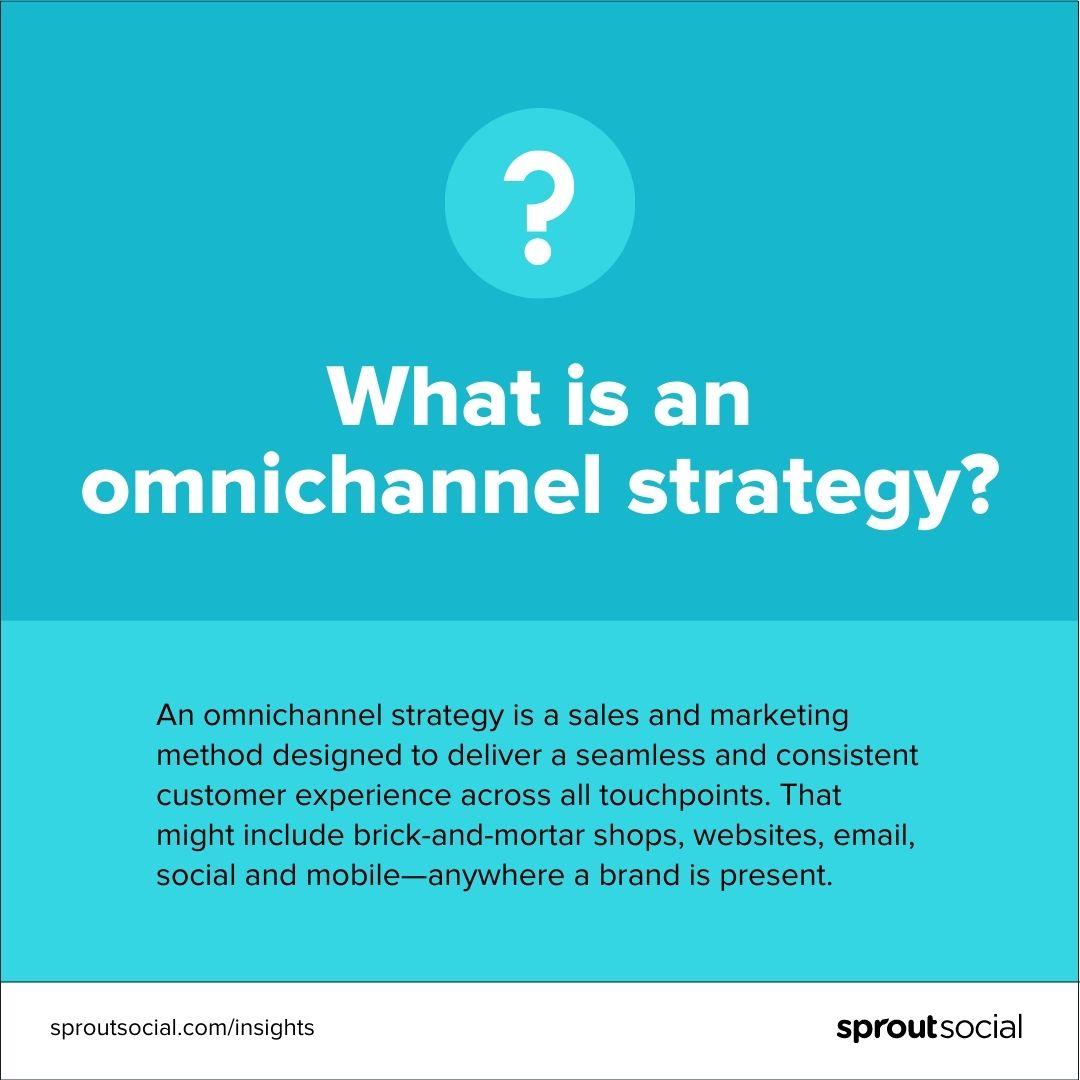
Embracing omnichannel Strategies for Maximum Reach
In today’s fast-paced digital landscape, businesses need to connect with their customers across multiple channels to stay competitive. Adopting an omnichannel approach allows you to meet your clients where they are, whether that’s through email, social media, or direct sales. By integrating your marketing and sales efforts, you can create a seamless experience that enhances customer satisfaction and loyalty.
To effectively implement an omnichannel strategy, consider the following key tactics:
- Unified Customer Data: Centralize customer information to provide a consistent experience. This means integrating CRM systems and tracking user interactions across all platforms.
- Channel-Specific Messaging: Tailor your content and messaging to fit the unique characteristics of each channel. What works on LinkedIn may not resonate on Instagram, so adjust your voice accordingly.
- Responsive Design: Ensure that all digital touchpoints—websites, emails, and ads—are mobile-friendly. A significant portion of B2B transactions now occurs on mobile devices, making responsive design essential.
- consistent Branding: Maintain a cohesive brand image across all platforms. This not only builds trust but also enhances brand recognition.
Moreover, analytics play a crucial role in an omnichannel strategy. By leveraging data, you can gain insights into customer behavior and preferences, allowing you to optimize your approach. regularly review performance metrics to adjust your tactics and stay ahead of the curve.
Consider implementing a table to compare customer engagement across different channels:
| channel | Engagement Rate | Conversion Rate |
|---|---|---|
| 20% | 5% | |
| Social Media | 15% | 3% |
| Website | 25% | 7% |
As you build your omnichannel strategy, remember that it’s not just about having a presence on multiple platforms; it’s about creating a fluid experience for your clients. By prioritizing customer interactions and feedback, you can refine your approach to ensure that each channel complements the others.

Leveraging Automation to enhance Efficiency and Reduce Costs
In today’s rapidly evolving business landscape, automation has emerged as a game-changer for B2B eCommerce. By embracing automated solutions,companies can streamline operations,boost productivity,and significantly cut costs. It’s not just about replacing humans with robots; it’s about enhancing human capabilities and creating a more efficient workflow.
One of the moast effective ways to implement automation is through inventory management systems. These systems can track stock levels in real-time and automatically reorder products when they fall below a certain threshold. This not only reduces the likelihood of stockouts but also minimizes excess inventory, leading to lower holding costs. with the right system in place, businesses can enjoy:
- Enhanced accuracy: Automated calculations reduce human error.
- Time savings: Free up valuable employee time for more strategic tasks.
- Improved cash flow: optimize purchase orders based on real-time data.
Another area ripe for automation is customer relationship management (CRM). Integrating automation in CRM allows for personalized communication at scale, enabling businesses to nurture leads and retain customers without excessive manual effort. Here are some key advantages:
- Targeted marketing: Use automated campaigns to reach the right audience.
- Consistent engagement: Maintain ongoing relationships with automated follow-ups.
- Data-driven insights: Leverage analytics to refine strategies continuously.
Moreover,automating the order fulfillment process can dramatically increase efficiency. By integrating eCommerce platforms with fulfillment centers through automated systems, businesses can:
| Benefits of Automated Fulfillment | Impact |
|---|---|
| Faster processing times | Reduce delivery times and boost customer satisfaction |
| Lower operational costs | Minimize labour costs associated with manual processes |
| Scalability | easily adjust to peak seasons without overcommitting resources |
Lastly, embracing automation in data analysis can lead to smarter decision-making. With powerful analytics tools, companies can automatically gather and analyze data from various sources. This not only saves time but also provides valuable insights into consumer behavior and market trends. The result? A data-driven approach that empowers businesses to make informed decisions swiftly and confidently.
In essence, leveraging automation is not merely an operational improvement; it’s a strategic imperative for B2B eCommerce in 2025. By adopting these technologies, businesses can not only enhance efficiency but also create a robust foundation for sustainable growth.

The Role of Mobile Optimization in B2B Transactions
In today’s fast-paced digital environment, mobile optimization is no longer a luxury; it’s a necessity for B2B transactions. As more professionals rely on their mobile devices for work, ensuring that your eCommerce platform is mobile-friendly can significantly impact your business relationships and revenue. Businesses that fail to adapt to this trend may find themselves lagging behind competitors who embrace the mobile-first approach.
Consider the following aspects of mobile optimization:
- User Experience: A seamless mobile experience is crucial. Websites that load slowly or are arduous to navigate can frustrate users, leading to abandoned transactions. Ensure that your site is responsive, providing a smooth experience across all devices.
- Speed and Performance: Mobile users expect swift access to information. Studies show that even a one-second delay can decrease conversion rates. implementing techniques like image optimization and minimizing redirects can enhance site speed.
- Accessibility: Make your content easily accessible on mobile devices. This includes clear fonts, appropriate button sizes, and easy-to-read layouts that facilitate quick decision-making for busy professionals.
Another key factor is the ease of completing transactions. Mobile-optimized checkouts should be simple and swift.Incorporating features like:
- One-click purchasing: Streamlines the buying process, reducing friction and making it easier for clients to finalize their orders.
- Saved payment methods: Allowing users to save their payment information can significantly speed up repeat purchases.
- Mobile-friendly payment gateways: Ensure that payment processing is secure and efficient, accommodating various payment methods popular in the B2B landscape.
As organizations increasingly adopt hybrid and remote work models, mobile optimization also plays a pivotal role in enabling real-time communication and collaboration. Mobile-friendly platforms should support:
- Instant messaging and chat features: Allowing sales teams and clients to communicate effectively, nonetheless of location.
- Document sharing: Ensuring that contracts and proposals are easily accessible and can be reviewed on-the-go.
To summarize, the integration of mobile optimization into your B2B strategy can lead to improved efficiency and higher conversion rates. As mobile usage continues to soar, businesses that prioritize mobile-friendly solutions are more likely to build strong relationships with clients and stay ahead in the competitive eCommerce landscape.
| Mobile Optimization Strategies | Benefits |
|---|---|
| Responsive design | Improved user engagement |
| Fast Loading speed | Higher conversion rates |
| Simple Checkout Process | Reduced cart abandonment |
| Real-time Communication Tools | Enhanced customer relationships |

Fostering Strong Partnerships with Suppliers and Distributors
in the ever-evolving landscape of B2B eCommerce,establishing and nurturing robust relationships with suppliers and distributors is not just beneficial—it’s essential. These partnerships are the backbone of prosperous operations,allowing businesses to respond swiftly to market demands and maintain a competitive edge. As we gear up for 2025,it’s crucial to prioritize collaboration and communication.
To foster strong partnerships, consider the following strategies:
- Open Communication: Cultivate a culture of transparency. Regular check-ins and updates can build trust and ensure that all parties are aligned on goals and expectations.
- Shared Technology: Leverage digital tools that enhance collaboration. Utilizing integrated platforms for inventory management and order processing can streamline operations and improve efficiency.
- Joint Problem Solving: when challenges arise, approach them as a team. Collaborative problem-solving can lead to innovative solutions that benefit all stakeholders.
- Performance Metrics: Establish clear KPIs to measure success.Regularly review these metrics together to identify areas for improvement and celebrate achievements.
- Training and Development: Invest in training programs that include both your team and your partners. This can enhance product knowledge and service delivery, ensuring everyone is well-equipped to meet customer needs.
Moreover, consider implementing a structured partnership framework.Below is a simple table to illustrate the key components of a successful supplier and distributor relationship:
| Component | Description |
|---|---|
| trust | Building confidence through transparency and reliability. |
| Communication | Regular updates and feedback loops to ensure alignment. |
| Collaboration | Working together on strategies, promotions, and challenges. |
| Innovation | Encouraging creative solutions and new approaches to market demands. |
As we approach 2025, leveraging strong partnerships will not only enhance your supply chain resilience but also open avenues for innovation and market expansion. By focusing on these key areas, businesses can create a collaborative ecosystem that drives mutual growth and success. Remember,in the world of B2B eCommerce,it’s not just about transactions; it’s about creating lasting partnerships that thrive on shared goals and values.
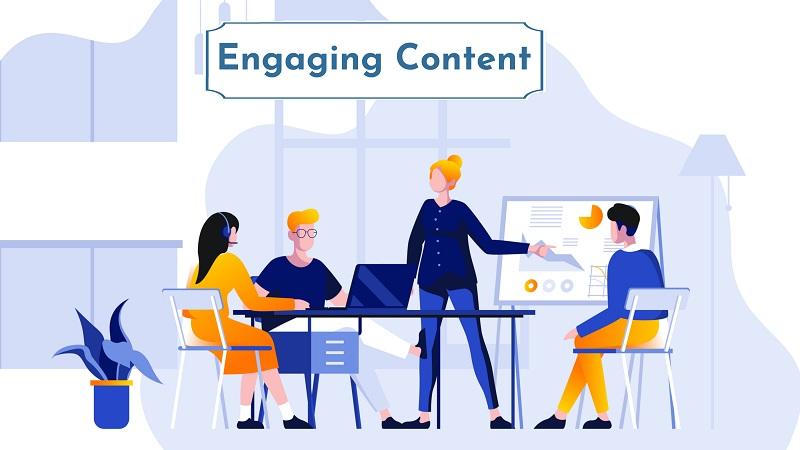
Creating Engaging Content that Educates and Converts
In the competitive realm of B2B eCommerce, creating content that not only captures attention but also drives conversions is essential. Businesses must prioritize crafting educational materials that resonate with their audience’s needs and pain points. Here are some tactics to ensure your content stands out:
- Understand Your Audience: Invest time in researching your target market. Create detailed buyer personas that encompass their challenges, goals, and preferences. This knowledge will guide your content strategy, ensuring relevance and impact.
- Leverage storytelling: Peopel remember stories far better than statistics. Weave narratives that highlight customer experiences or showcase how your products have solved real-world issues. This emotional connection can significantly enhance engagement.
- Utilize Visuals: Incorporate infographics, videos, and images to complement your text. Visual content is more digestible and can illustrate complex concepts effectively. This multi-dimensional approach caters to different learning styles.
In addition to these tactics, consider the format of your content. Different formats can serve various purposes:
| content Format | Purpose | Engagement Level |
|---|---|---|
| Blog Posts | In-depth education | moderate |
| Webinars | Live interaction and Q&A | High |
| Case Studies | Showcasing success | High |
| Whitepapers | Comprehensive insights | Moderate |
Moreover, don’t underestimate the power of SEO optimization. Implement keyword research to identify terms your audience is searching for. Integrating these keywords naturally into your content will improve visibility and attract organic traffic. Additionally, ensure that your content is mobile-friendly, as a significant portion of users accesses information through their smartphones.
Lastly, always include a clear call-to-action (CTA) in your content. Whether it’s encouraging readers to sign up for a newsletter,download a resource,or request a demo,CTAs guide your audience’s next steps effectively. Craft CTAs that are compelling and aligned with the content’s purpose, making it easy for readers to take action.
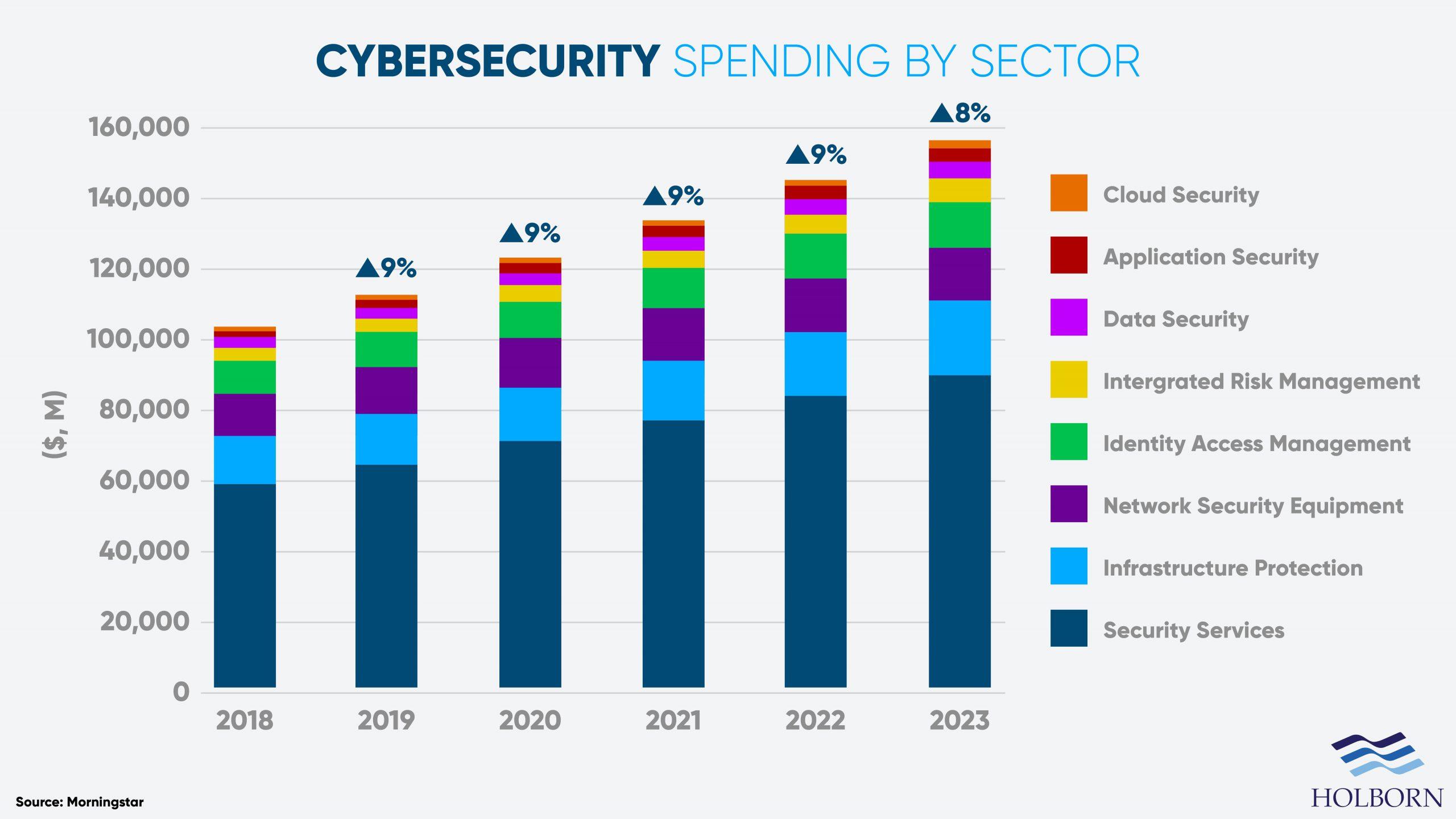
Investing in Cybersecurity to protect Your Business
In an increasingly digital marketplace, the importance of cybersecurity cannot be overstated.As businesses expand their online presence, they also become more vulnerable to cyber threats. Investing in robust cybersecurity measures is not just a technical necessity; it’s a strategic imperative. Here are several reasons why your B2B ecommerce strategy must prioritize cybersecurity:
- Data Protection: Your customers trust you with sensitive information. Strong cybersecurity measures help safeguard this data, ensuring compliance with regulations and building customer confidence.
- preventing Financial Loss: Cyber attacks can lead to significant financial losses due to theft, recovery costs, and reputation damage. An investment in cybersecurity can save you from these potential setbacks.
- Business Continuity: A cyber incident can disrupt operations for hours or even days. Effective cybersecurity strategies ensure that your business can continue to operate smoothly,even in the face of threats.
- Competitive Advantage: In a crowded ecommerce space, demonstrating your commitment to security can set you apart. Businesses that prioritize cybersecurity attract more customers, fostering loyalty and trust.
To effectively integrate cybersecurity into your B2B ecommerce strategy, consider these essential components:
| Component | Description | Benefits |
|---|---|---|
| Risk assessment | Identify and evaluate potential security risks. | Informed decision-making. |
| Employee Training | Regular training sessions on security protocols. | reduced human error and increased vigilance. |
| Regular Software Updates | Keep systems and software up-to-date. | Minimize vulnerabilities. |
| Incident Response Plan | Develop a strategy to respond to security breaches. | Quick recovery and damage control. |
By committing resources to these cybersecurity strategies, you not only protect your assets but also position your business for future growth. As you craft your ecommerce strategy for 2025, remember that a strong cybersecurity foundation is essential for navigating the complexities of the digital marketplace. This proactive approach will empower you to embrace innovation while safeguarding your business against evolving threats.
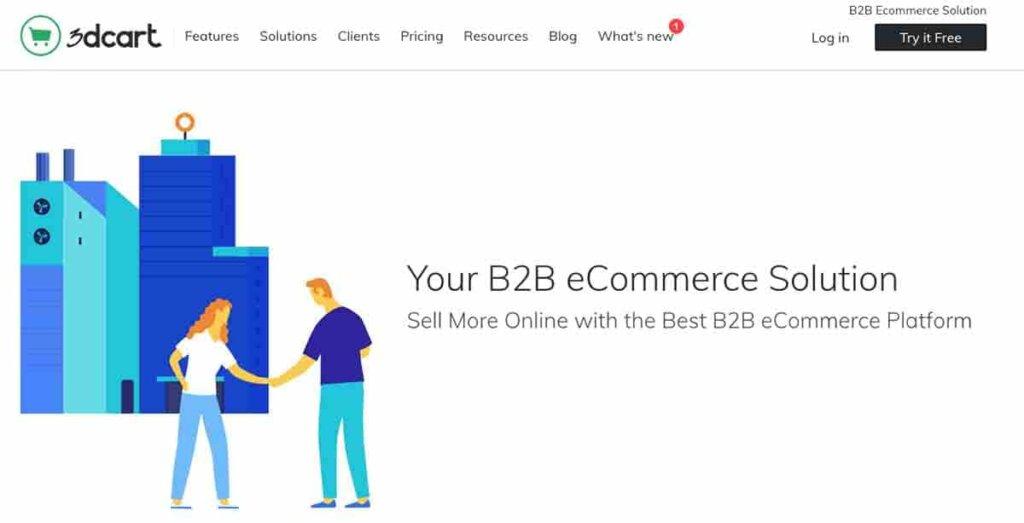
The Future of B2B ecommerce: Trends to Watch and Adopt
The landscape of B2B ecommerce is evolving rapidly, driven by technological advancements and shifting buyer expectations. To stay ahead, businesses need to embrace the following key trends:
- AI and Automation: Integrating artificial intelligence to personalize customer experiences, automate processes, and provide data-driven insights is becoming essential. Businesses that leverage AI can optimize their supply chains, improve customer service, and enhance decision-making.
- Omnichannel Strategies: Buyers are increasingly engaging through multiple channels. A seamless experience across online and offline platforms can boost customer satisfaction and brand loyalty. companies should focus on aligning their sales, marketing, and customer service efforts across all touchpoints.
- Mobile Commerce: With an increase in mobile device usage, optimizing ecommerce platforms for mobile browsing and transactions is crucial. Mobile-friendly designs, quick loading times, and easy navigation can significantly enhance user experience.
- Sustainability: As environmental consciousness rises,businesses are prioritizing sustainability in their operations. Companies that adopt eco-friendly practices not only meet consumer demands but also differentiate themselves in a competitive market.
- Subscription-Based Models: The popularity of subscription services is spilling into B2B. Offering products or services on a subscription basis can improve customer retention and create a steady revenue stream.
To illustrate how these trends can be applied, consider adopting a data-driven approach to inform your strategy:
| Trend | Actionable Strategy |
|---|---|
| AI and Automation | Implement chatbots for 24/7 customer support. |
| Omnichannel Strategies | Create a unified dashboard for tracking customer interactions across channels. |
| Mobile Commerce | Develop a mobile app to facilitate repeat orders and easy shopping. |
| Sustainability | Source materials from sustainable suppliers and promote your eco-friendly initiatives. |
| Subscription-Based Models | Introduce a tiered subscription service for bulk buyers. |
As we head toward 2025, businesses that adapt to these trends will not only streamline their operations but also enhance customer loyalty and market competitiveness. The integration of advanced technologies and innovative strategies will be the cornerstone of successful B2B ecommerce. now is the time to assess your current practices and explore how these trends can be incorporated into your business model for sustained growth.
Frequently Asked Questions (FAQ)
Q&A on B2B Ecommerce Strategy: The Key Tactics for 2025
Q: Why is it crucial for businesses to have a solid B2B ecommerce strategy in 2025?
A: Great question! As we step into 2025, the digital marketplace is evolving rapidly. Businesses that prioritize a well-defined B2B ecommerce strategy can not only streamline their operations but also significantly enhance customer experiences. With more companies shifting to online platforms for buying and selling, having a robust strategy allows you to stay ahead of the competition and meet the changing needs of your customers.
Q: What are some of the key tactics that businesses should consider for their B2B ecommerce strategy?
A: Ther are several key tactics to consider! Firstly, investing in a user-friendly website is vital.Your online store should be easy to navigate, with intuitive features that allow for quick ordering and reordering. Secondly, leveraging data analytics can provide insights into customer behavior, helping you tailor your offerings. Lastly,integrating omnichannel solutions ensures that your customers can interact with your business through multiple touchpoints—be it online,via mobile,or even in-person—creating a seamless experience.
Q: How critically important is personalization in B2B ecommerce?
A: Personalization is absolutely essential! In 2025, customers expect experiences that cater specifically to their needs. This means using data to understand their buying patterns and preferences. By offering personalized recommendations, pricing, and content, you not only enhance their experience but also build loyalty. Remember, happy customers are repeat customers!
Q: What role does technology play in shaping B2B ecommerce strategies?
A: Technology is at the heart of any successful B2B ecommerce strategy. From AI-driven chatbots that provide instant customer support to advanced inventory management systems that reduce costs,the right technology can transform your operations. Embracing innovations like augmented reality (AR) for product visualization or blockchain for secure transactions can set you apart in the competitive landscape.
Q: Can you explain the importance of mobile optimization for B2B ecommerce?
A: Absolutely! As more decision-makers use mobile devices to research and make purchases, mobile optimization becomes non-negotiable. A mobile-friendly site not only enhances user experience but also increases conversion rates. By ensuring your ecommerce platform is responsive and accessible on all devices, you can capture a larger audience and meet your customers where they are.
Q: What impact will sustainability have on B2B ecommerce strategies by 2025?
A: Sustainability is becoming a significant factor in purchase decisions. Companies that prioritize eco-friendly practices and transparent supply chains will appeal to a growing segment of environmentally-conscious buyers. By incorporating sustainable practices into your ecommerce strategy—like offering green products or using eco-friendly packaging—you can differentiate yourself and build a stronger brand reputation.
Q: How do you foresee the future of B2B ecommerce beyond 2025?
A: While we can only speculate, the future of B2B ecommerce looks promising! We can expect further integration of advanced technologies like AI and machine learning to enhance customer experience and operational efficiency. As businesses continue to embrace digital transformation, the focus will likely shift towards enhancing collaboration and community-building among buyers and suppliers. The key takeaway is to remain adaptable and open to new trends, ensuring that you’re always ready to meet the demands of the market.
Q: What’s the best starting point for businesses looking to develop their B2B ecommerce strategy?
A: Start by assessing your current operations and identifying areas for improvement. Conduct market research to understand your customers’ needs and preferences. Engage with your team to brainstorm potential solutions and set clear, achievable goals. consider investing in the right technology and tools to support your strategy. Remember,it’s a journey—take it step by step,and don’t be afraid to experiment!
developing a B2B ecommerce strategy for 2025 is not just about keeping up; it’s about leading the pack. By embracing these tactics now, your business can position itself for success in the evolving digital landscape. are you ready to take the leap?
Final Thoughts
As we wrap up our exploration of B2B eCommerce strategies for 2025, it’s clear that the landscape is evolving faster than ever. The tactics we’ve discussed—from leveraging data analytics to enhancing customer experiences—aren’t just trends; they’re essential building blocks for your business’s future.
Remember, the key to thriving in this digital age lies in your willingness to adapt and innovate. By embracing these strategies, you’ll not only meet the demands of today’s customers but also position your business as a leader in the industry.
So, take a moment to assess where your eCommerce strategy stands today.What can you implement right now to stay ahead? The future is radiant for those who are proactive. Don’t wait for change to happen; be the change.
Let’s step into 2025 with confidence, ready to transform challenges into opportunities. Your success story is waiting—let’s make it happen!

